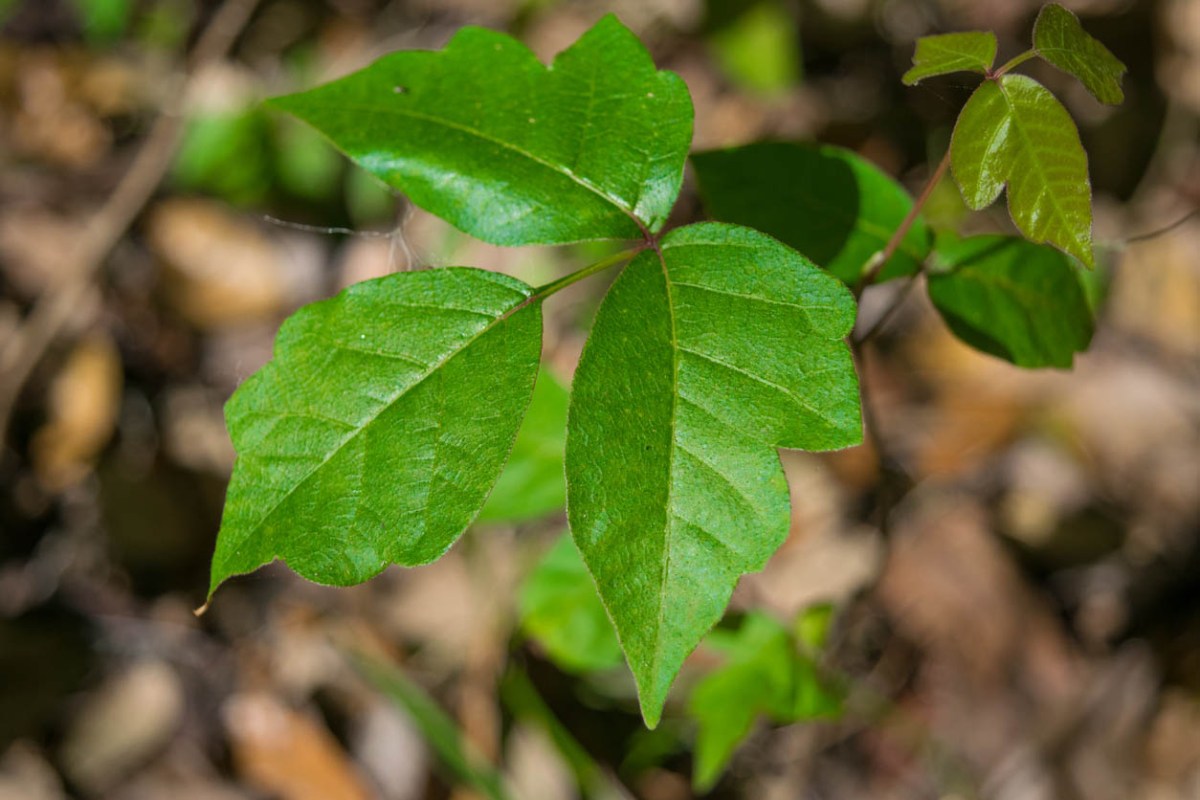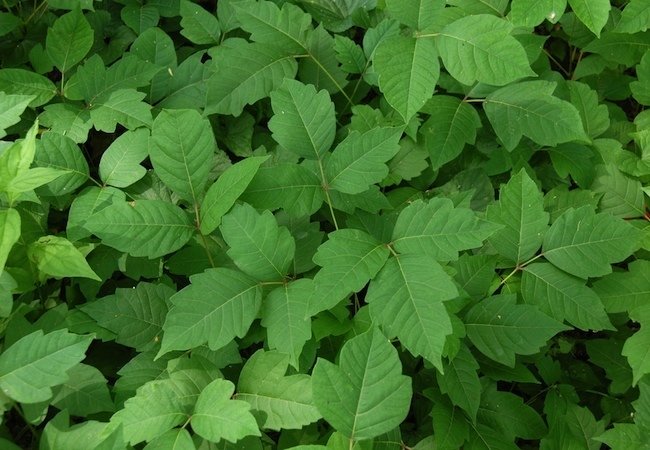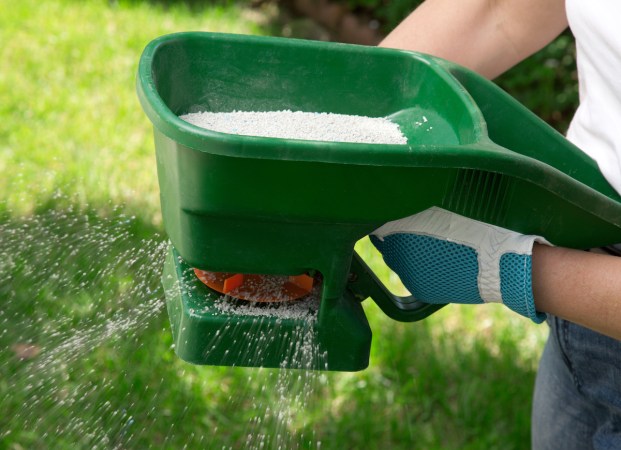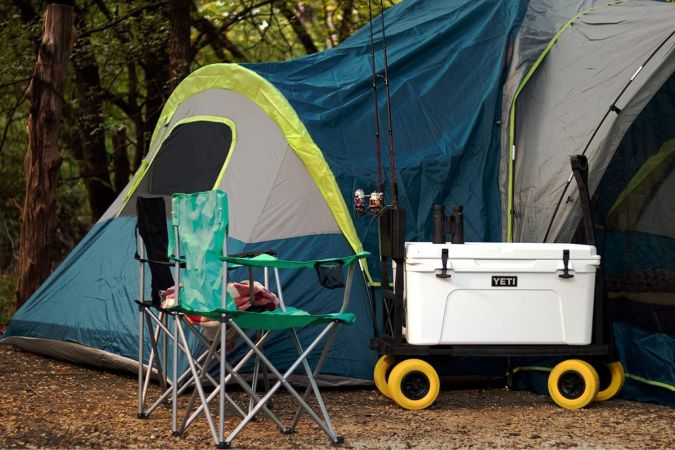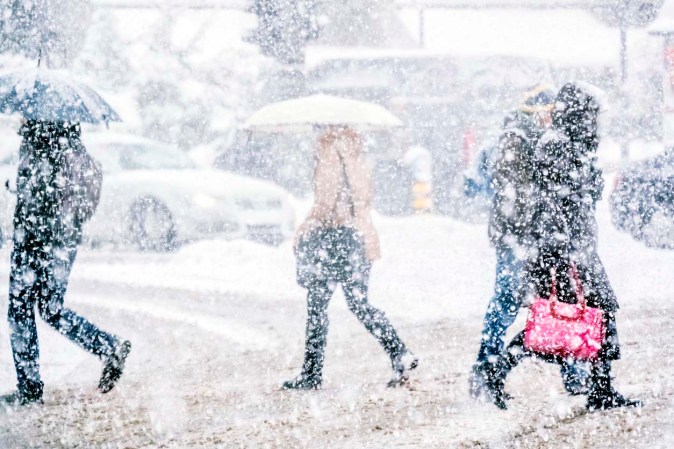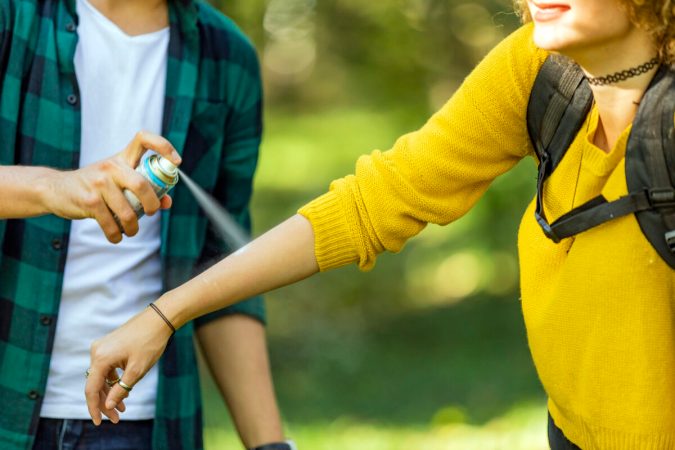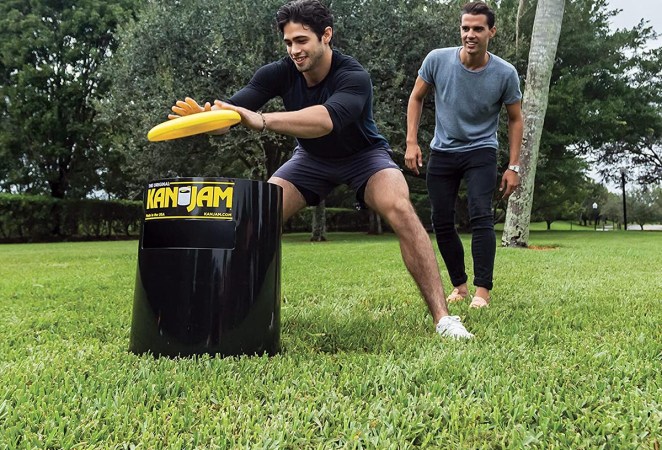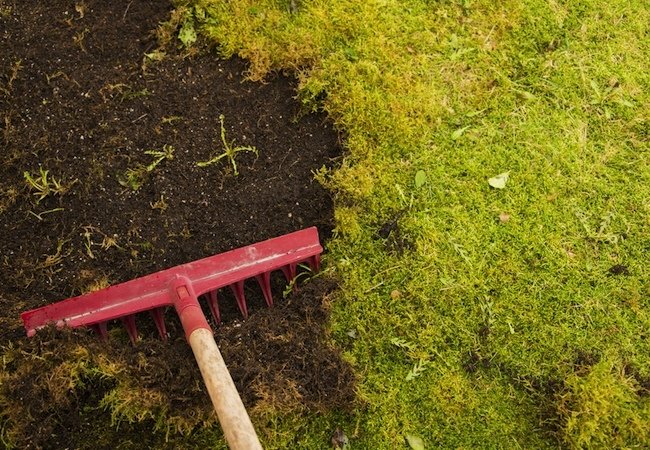We may earn revenue from the products available on this page and participate in affiliate programs. Learn More ›
Q: I’m not sure if the plants growing in my yard are poison ivy or something else. What does poison ivy look like, and how can I safely identify it?
A: Even a brief brush with poison ivy can cause an itchy rash that blisters over time and scratching will only worsen symptoms. Unfortunately, avoiding poison ivy completely is difficult; it grows in various places across North America, including forests, near bodies of water, parks, and in residential yards.
Both eastern and western poison ivy grows on the ground. Eastern poison ivy can grow upward on trees, shrubs, walls, and fences. Homeowners with yards will want to learn to identify the plant to avoid exposure and get rid of it altogether.
There are various ways to identify poison ivy. Successful identification depends on the time of year, the color, and the look of the plant. Here’s what to know about poison ivy identification.
Poison ivy always has three leaves: one in the center and one on each side.
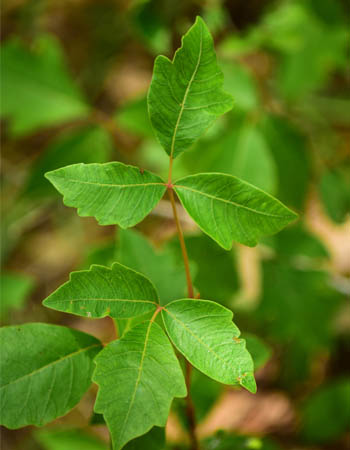
How many leaves does poison ivy have? The common phrase “leaves of three, let it be” is a good rule of thumb for identifying poisonous weeds. However, many plants grow in leaves of three, so understanding the actual structure of the poison ivy plant will help with more accurate identification.
At the base of every poison ivy leaf is a small stem that leads towards the main vine, which houses the poison. When identifying poison ivy, the longer leaf stem usually belongs to the leaf in the middle. Additionally, the leaves are generally twice as long as they are wide and are between 2 to 6 inches long. The edges of the leaves can either be smooth or frayed with teeth or lobes, while the sides of the leaf can vary in symmetry. Many people have trouble distinguishing between poison ivy vs. poison oak as they look similar, but the leaves of the latter have more rounded edges.
Poison ivy grows as a shrub or a vine throughout the contiguous United States, primarily in wooded or marshy areas.
Unfortunately, much of the country has some amount of poison ivy growing in it. However, the form in which poison ivy grows can be slightly different based on its location. In the Eastern United States, it is more common to see poison ivy vines growing on trees. These vines are very thick and have a fuzzy, almost hairlike surface texture. Perhaps more recognizable is poison ivy’s shrub form, which is more common in the West. This plant grows relatively close to the ground and resembles other common weeds and shrubs.
The leaves change color throughout the year before falling off in the winter.
In the spring, poison ivy leaves are usually dark red or green mixed red. As they’re not fully developed, these new leaves may be more rounded at their tips than mature leaves. Young poison ivy may also grow flower buds at their base, which are white or have a greenish-yellow hue, and they grow in small clusters.
During the summer, new poison ivy plants will take on a reddish hue, while more mature plants tend to be green throughout. The flower buds of poison ivy will have turned off-white at this point, later turning into green berries. “The berries almost always grow in a grape-like cluster attached to the stem,” explains Ali Malik, owner of The Poison Ivy Specialist, which removes poisonous plants from properties in Pennsylvania, New Jersey, Delaware, Maryland, and New York. This is also when the plant sees the most growth, dominating or weaving into the spaces around other plants, and also growing up entire walls and trees if not removed.
In the fall, the poison ivy plant’s leaf shape and size will generally look the same as it did in the summer, just with different colors; fall poison ivy leaves may appear yellow, orange, or even red. At this time, the buds on the flowers may be entirely white, and any berries at the plant roots will turn from green to white.
In winter, poison ivy leaves will turn completely red and then wither in size and fall off. However, the plant can still grow through its exposed roots, which are usually brown and fuzzy. The white berries will most likely be more visible at this point after all the leaves are off the roots.
Poison ivy produces a sap called urushiol, which can cause a reaction within 1 to 3 days after coming into contact with skin.
Poison ivy has a reputation for causing itchy rashes when touched. The reason for this is that the plant’s sap contains an oil called urushiol. This is the same substance that is produced by poison oak and poison sumac. According to the Cleveland Clinic, as many as 90 percent of people who come into contact with urushiol will develop an allergic reaction, typically in the form of an itchy skin rash. This reaction can be immediate, or in some cases may not develop until several days after the initial exposure. Some people are also more allergic to urushiol than others, so the severity of the rash can vary widely. It’s worth noting that when poison ivy is burned, the smoke from the resulting fire can also contain urushiol. Inhaling this smoke can lead to breathing problems or irritation in the lungs, nose, and throat.
A poison ivy rash looks like red streaks across the affected area, accompanied by itchy blisters.
After a run-in with poison ivy, it will take a bit of time for the rash to actually develop. Because of this delay, it may seem as though the rash is spreading when it is still just developing. One can get a poison ivy rash from touching the actual plant or touching anything that has come in contact with the plant itself because the oils linger on surfaces.
The first sign of a poison ivy rash is an intense itch. But what does a poison ivy rash look like? According to the American Academy of Dermatology Association, the itch occurs first, and then the red streaks of the rash. Blisters can appear soon afterward, and they may burst and leak. Scratching exacerbates this process.
For 2 to 3 weeks, a crust will form over the blisters’ surface and then clear up. However, according to the Mayo Clinic, individuals who have never had a poison ivy rash before may not see the rash clear up for over 21 days. Over-the-counter poison ivy treatments and home remedies can be helpful to combat the itch.
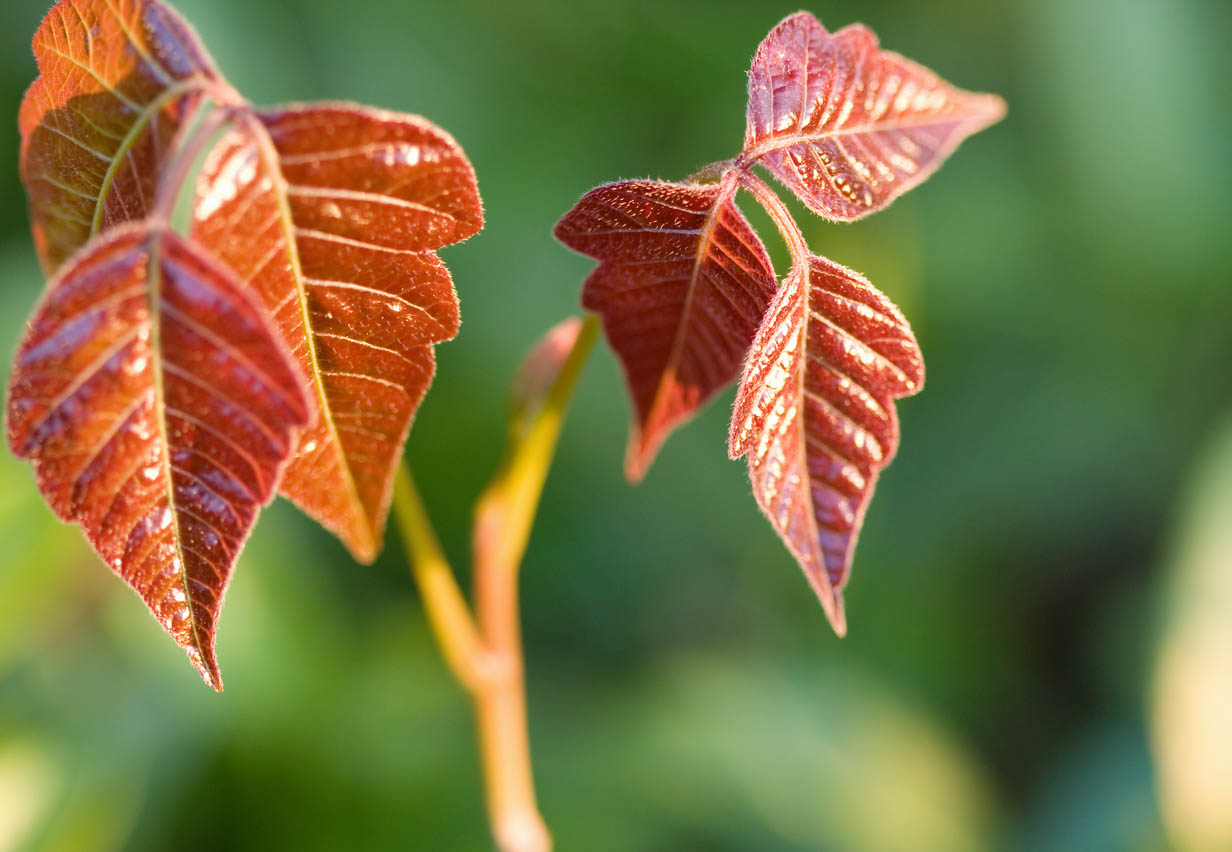
Although poison ivy is harmful to humans, it is an excellent food source for wild animals.
While people tend to avoid poison ivy at all costs and seek to remove it from their yards and properties, animals have a very different relationship to the plant. According to Mass Audubon, most animals are not allergic to urushiol in the same way that people are. Mammals such as goats and deer even like to snack on poison ivy leaves, and birds will eat the plant’s berries throughout the winter. Pollinators like bees are also drawn to poison ivy. For this reason, those who hope to attract wildlife to their homes may want to think twice before completely removing poison ivy.
If you have poison ivy in your yard, remove it by digging up the plants as close to the root as possible or by applying herbicide.
Going over poison ivy plants with a lawn mower or weed wacker only temporarily removes the weed from the yard. According to the Alabama Cooperative Extension Service, doing so can even cause plant particles containing urushiol to become airborne, increasing the risk of exposure and inhalation. To truly get rid of poison ivy, it’s best to remove the roots in addition to the stems and leaves to prevent regrowth. The best way to do this manually is to put on thick gloves, long sleeves, and eye protection, and dig up each plant individually at the root.
The Oklahoma State University Extension explains that herbicides containing triclopyr and glyphosate can be effective at killing poison ivy plants. However, homeowners will want to use caution and follow directions carefully when using chemical herbicides to avoid harming themselves or any surrounding plants and wildlife.
Hiring a professional to remove poison ivy from your yard is often the safest option.
After learning how to identify poison ivy, some homeowners feel comfortable removing this weed themselves. But it’s worth remembering that even slightly brushing this weed could result in up to 3 weeks of dealing with an itchy, painful rash.
For those who are not willing to risk it or who know that they are particularly sensitive to urushiol, the safest way to eliminate poison ivy from the yard is to leave this job to one of the best poison ivy removal services like TruGreen. Not only can these professionals save homeowners the risk of contracting an irritating rash, but they are also better equipped to completely eradicate poison ivy from the property. They’re also trained to identify poison sumac, poison oak, and other hazardous plants and can take care of removing these weeds, too.
